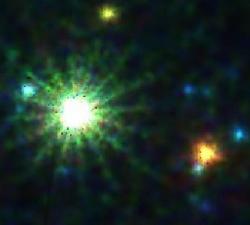 ESA’s XMM-Newton X-Ray observatory has helped astronomers puzzle through a mystery that’s haunted them for a long time. For more than 20 years, observatories have detected X-rays streaming from something in the AB Aurigae system. But nothing in the system should be able to generate this quantity of X-rays.
ESA’s XMM-Newton X-Ray observatory has helped astronomers puzzle through a mystery that’s haunted them for a long time. For more than 20 years, observatories have detected X-rays streaming from something in the AB Aurigae system. But nothing in the system should be able to generate this quantity of X-rays.
AB Aurigae contains 2.7 times the mass of our Sun, and it’s one of the largest stars in the Taurus-Auriga star-forming cloud. It’s classified as a Herbig star, named after the astronomer who first discovered them. When the region was viewed in the X-ray spectrum, AB Aurgae stood out like a sore thumb.
But what could be releasing so many X-rays? Some astronomers suggested a companion star, but the temperature of the gas producing the X-rays was too low to be a newborn star.
The data from XMM-Newton showed that the X-rays are actually coming from a region just above the star. It appears that material cast off by the star by its two hemispheres are being collided together by its magnetic field. It’s where the solar wind is colliding that the X-rays are being generated.
Original Source: ESA News Release
